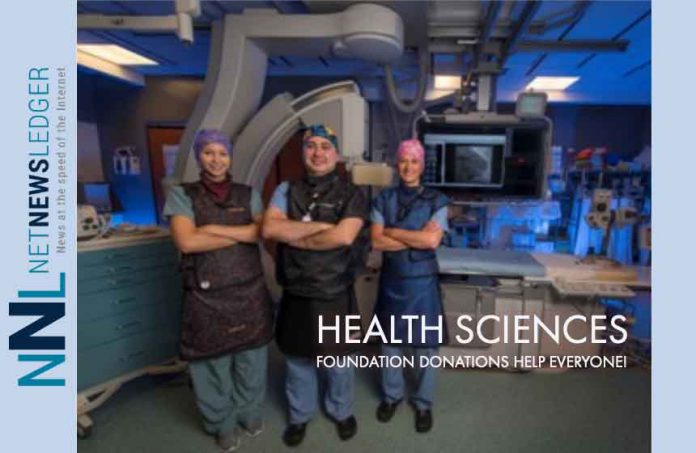THUNDER BAY – LIVING – The Cardiac Catheterization Lab, or “Cath Lab” at Thunder Bay Regional Health Sciences Centre is a specialized, regional unit that actually contains two separate catheterization rooms. The unit provides several services for patients with a variety of heart conditions and events. Our Cath Lab team is comprised of a small, close-knit team of professionals including Interventional and Diagnostic Cardiologists, Surgeons, RNs, MRTs, and clerks. Together, the team provides 24/7 emergency care, right here in Thunder Bay.
100% of your donations to the Northern Cardiac Fund provide funding to purchase the life-saving equipment that’s required in the Cath Lab. Donate today at healthsciencesfoundation.ca or call 345-4673.
Our Cath Lab performs over 2000 angiograms (also known as cardiac catheterizations) a year and inserts 240 pacemakers annually. An angiogram is used to diagnose heart problems and can reveal if you have any blockages in your coronary arteries. If you do, our Cardiologists can determine the degree to which the arteries are blocked, where, and how to treat it. A patient with blockage may require:
1) Adjustment of medications,
2) Cardiac surgery, or
3) Angioplasty
Angioplasty, also known by its technical name, Percutaneous Coronary Intervention (PCI), is a specialized procedure to open up a coronary artery which is narrowed due to plaque build-up. A fine tube, or catheter, is threaded from the artery in the wrist or groin up to the site of the blockage in the heart. The balloon-tip of the catheter is inflated to press the plaque back against the wall of the artery. When the catheter is removed, the artery remains open wider than before, allowing more blood and oxygen to get to the heart muscle. At our Hospital, we perform nearly 800 life-saving angioplasty procedures a year.







